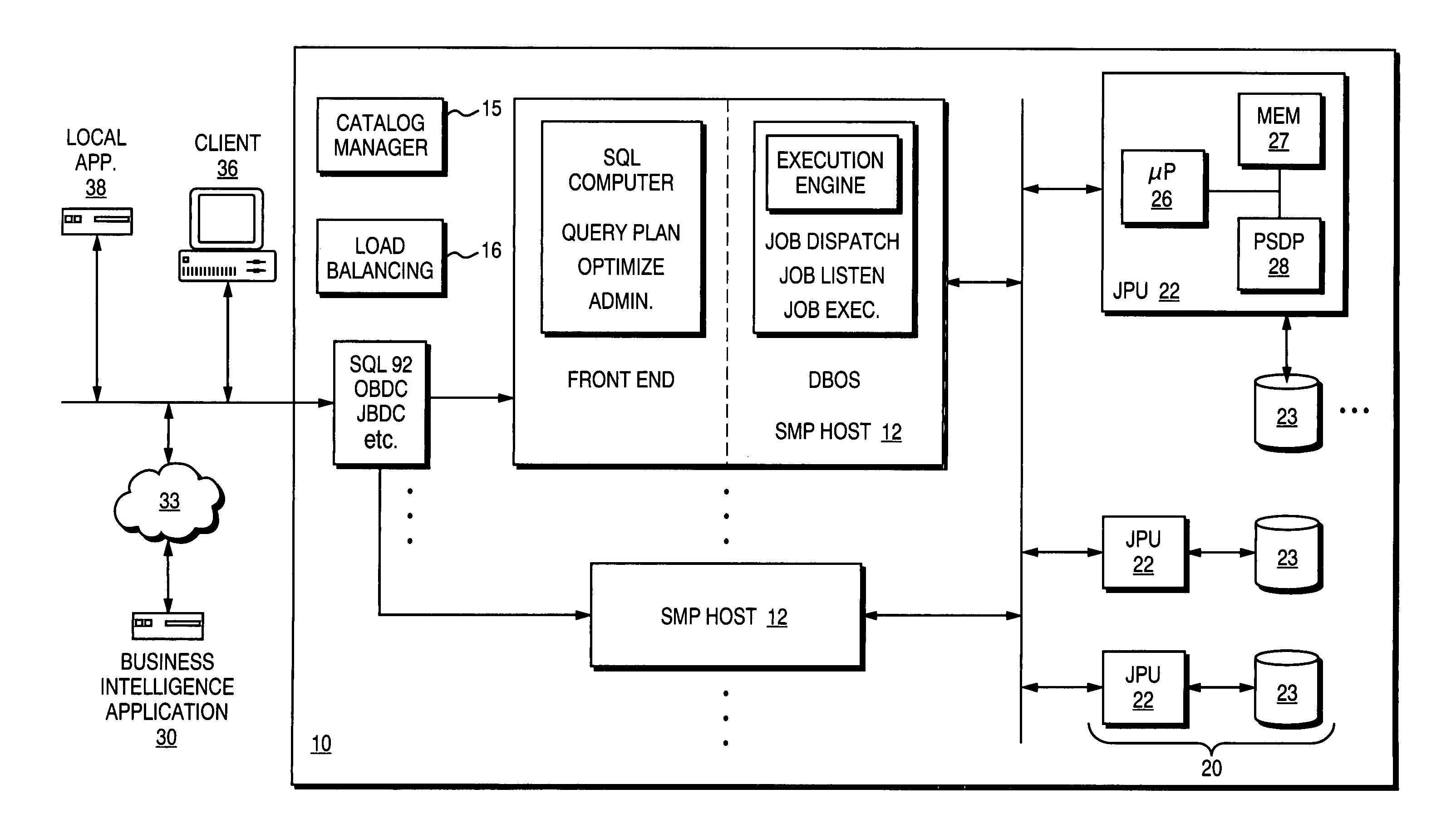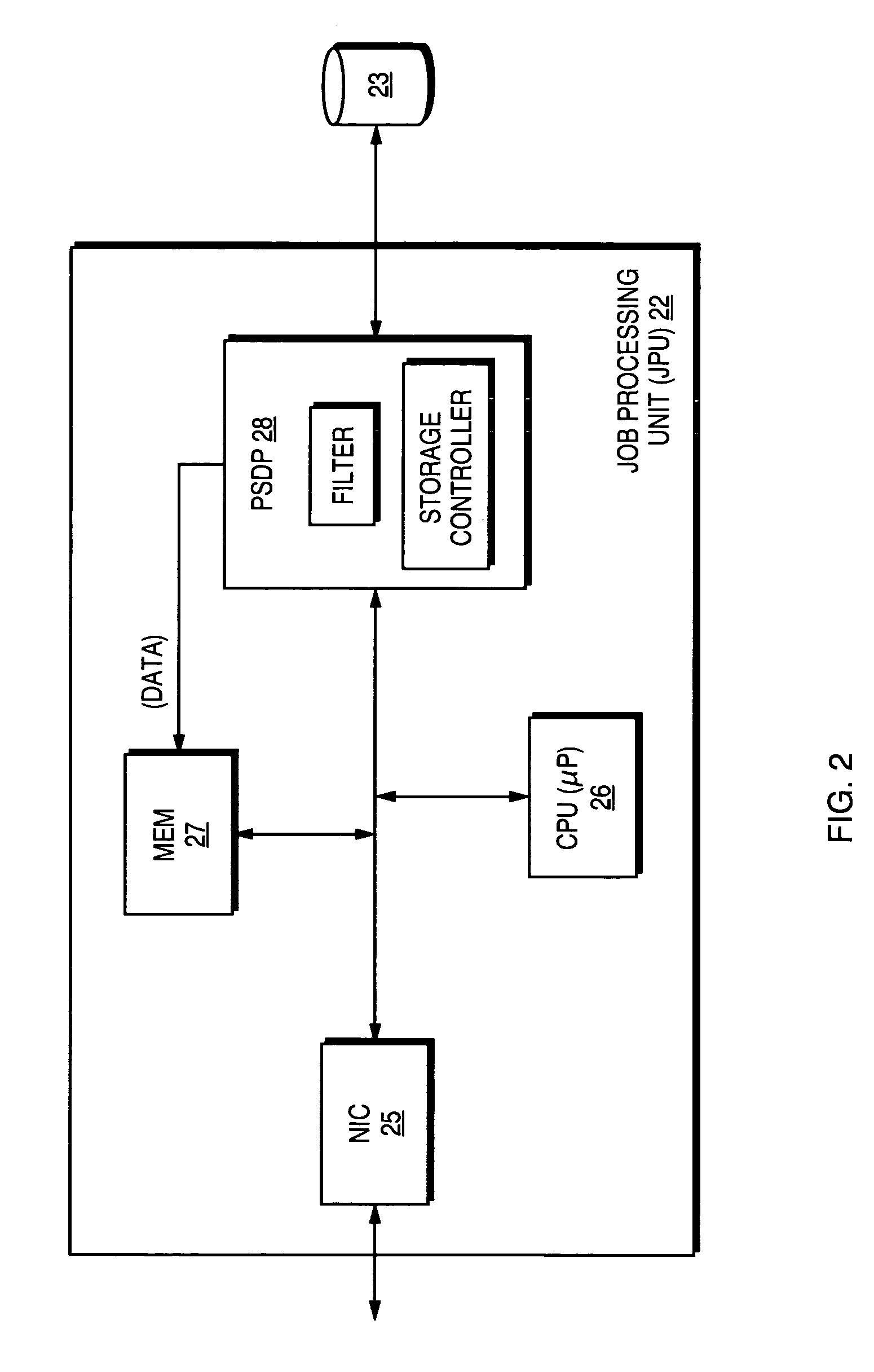Programmable streaming data processor for database appliance having multiple processing unit groups
a data processor and database technology, applied in the field of distributed data processing systems, can solve the problems of wasting valuable time in the process of retrieving and storing unnecessary data, limiting the speed at which data analysis can be performed, and waste time spent fetching it, etc., to achieve the effect of effectively leveraging the ever-increasing density of standard id
- Summary
- Abstract
- Description
- Claims
- Application Information
AI Technical Summary
Benefits of technology
Problems solved by technology
Method used
Image
Examples
Embodiment Construction
[0023]In a preferred embodiment, the present invention is a data processing system having two or more groups of processors that have attributes that are optimized for their assigned functions. A first processor group consists of one or more host computers, which are responsible for interfacing with applications and / or end users to obtain queries, for planning query execution, and for, optionally, processing certain parts of queries. The hosts in the first group may be SMP type machines. A second processor group consists of many streaming record-oriented processors called Job Processing Units (JPUs), preferably arranged as an MPP structure. The JPUs typically carry out the bulk of the data processing required to implement the logic of a query.
[0024]Functions of the host computers in the first group can be divided into a “Front End” and an “Execution Engine”. The Front End is responsible for parsing queries, generating query execution plans, optimizing parallelizing execution plans, c...
PUM
 Login to View More
Login to View More Abstract
Description
Claims
Application Information
 Login to View More
Login to View More - R&D
- Intellectual Property
- Life Sciences
- Materials
- Tech Scout
- Unparalleled Data Quality
- Higher Quality Content
- 60% Fewer Hallucinations
Browse by: Latest US Patents, China's latest patents, Technical Efficacy Thesaurus, Application Domain, Technology Topic, Popular Technical Reports.
© 2025 PatSnap. All rights reserved.Legal|Privacy policy|Modern Slavery Act Transparency Statement|Sitemap|About US| Contact US: help@patsnap.com



